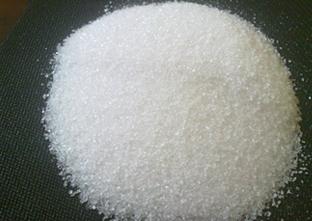Dam plastic!

The most striking thing about this line of business is how many products have been developed…
It’s true, but it’s the way it is. There’s a different solution for practically every type of flooding and pollution.
For us, as specialists, a river in full spate and a raging ocean have nothing in common, apart from the obvious fact of having to tackle rising waters in both cases.
And again, you don’t tackle hydrocarbon pollution in the same way as chemical pollution.

What solutions have you got for tackling rising water levels ?
 A lot, and especially very different ones according to the environment.
A lot, and especially very different ones according to the environment.
Damming river water is easier than sea water, where salt corrosion creates problems. That said, a lot of barriers are made of PVC because it is easy to use, perfectly water-tight and highly versatile. Water Rails©, for example, is a versatile and flexible flood protection barrier that can be used on water levels between 30cm and 2 metres over an unlimited distance. What they are, are PVC cylinders that are first inflated with air then filled with water to guarantee stability. Many fire services use them. Other big pluses are that the PVC is light weight, and easily folded and stored.
So the principle of this barrier is pretty straightforward …
 There are more ingenious ones, like the AFAP© boom which is stabilized by the weight of the water it holds back.
There are more ingenious ones, like the AFAP© boom which is stabilized by the weight of the water it holds back.
The barrier rises up as the pressure increases. It’s made of PVC, too, but isn't a pure cylinder. It’s actually a honeycomb, with cells that water can flow into making the barrier swell up.
It’s perfect for low-level flooding, and can even be used by homeowners.
Are individuals interested in these kinds of product, too ?
Yes, because a lot of them live in houses built on flood plains.
Their main concern is to protect their property from river or seawater ingress. So what has been developed is a sort of PVC weatherboard skirting to attach to the house to be protected.
This system, known as Paré-O©, ensures that the house is fully protected from flood waters up to a metre in height. In most cases, that's plenty!

Moving on to the fight against pollution. Is there much new happening there ?
 Absolutely. But, there are two different types of products here: booms and sorbents. Booms are very much like the anti-flood barriers in that they are also PVC cylinders. They are used for containing and stopping slicks from spreading. But there are big differences between the kinds of booms: some are for rivers, others are ocean-going. Ocean booms have to withstand wave swells and crashes, so they are ballasted and fitted with skirts going down up to under a metre below sea level. This way, the polluting material is contained even when the boom is at the crest of a wave. These booms are rugged and heavy-duty, able to withstand traction, especially when being towed by boats.
Absolutely. But, there are two different types of products here: booms and sorbents. Booms are very much like the anti-flood barriers in that they are also PVC cylinders. They are used for containing and stopping slicks from spreading. But there are big differences between the kinds of booms: some are for rivers, others are ocean-going. Ocean booms have to withstand wave swells and crashes, so they are ballasted and fitted with skirts going down up to under a metre below sea level. This way, the polluting material is contained even when the boom is at the crest of a wave. These booms are rugged and heavy-duty, able to withstand traction, especially when being towed by boats.
What about sorbents ?

This is the really big innovation area. Until recently, there was almost one way of dealing with each type of pollution. Nowadays, the industry is increasingly offering all-purpose sorbents,what we call land and marine sorbents. At the same time, their absorptive capacity has shot up. You can now find sorbents on the market that weigh 5 kg and can absorb up to 50 litres of liquid. The weight to absorptive capacity ratio is phenomenal. Sorbents can be made of either hydrophilic or hydrophobic polypropylene. I need to explain that Hydrophobic polypropylene absorbs just the polluting material, and is right for oil spills because oil and water don’t mix, whereas hydrophilic polypropylene absorbs all liquids, including water, and so is for use where the polluting material does mix with the water.
You also offer an innovative composite material solution for leak repair. Can you tell us more ?
The Miko Plaster© Emergency Response Bags are a particularly interesting and ground-breaking invention. They are magnetic kevlar/aramide reinforced patches that can be applied to a damaged tank. The patch stops the leak or at least significantly limits a spill. It’s an emergency response solution that helps avoid what could be a major pollution incident. The patches are easy to apply, and come in various sizes up to and over 1 sq. m. They’re so amazing that I think every lorry driver and oil tanker crew should carry one of these kits on board.

About the users - do they need training to use this range of products ?

You absolutely do not have to be a trained engineer to use them! They are all easy to use. Our client-base is pretty diverse – ranging from small garages through fire brigades and industry to local authorities – but they are all professionals who know how to respond to flooding or pollution incidents. The residential market is lagging behind, but climate change could see homeowners’ needs for anti-flooding solutions growing… But, manufacturers are looking to put out the easiest-to-use products possible.
MORE INFORMATION
M Riad Kaddoura
egow@egow.be





